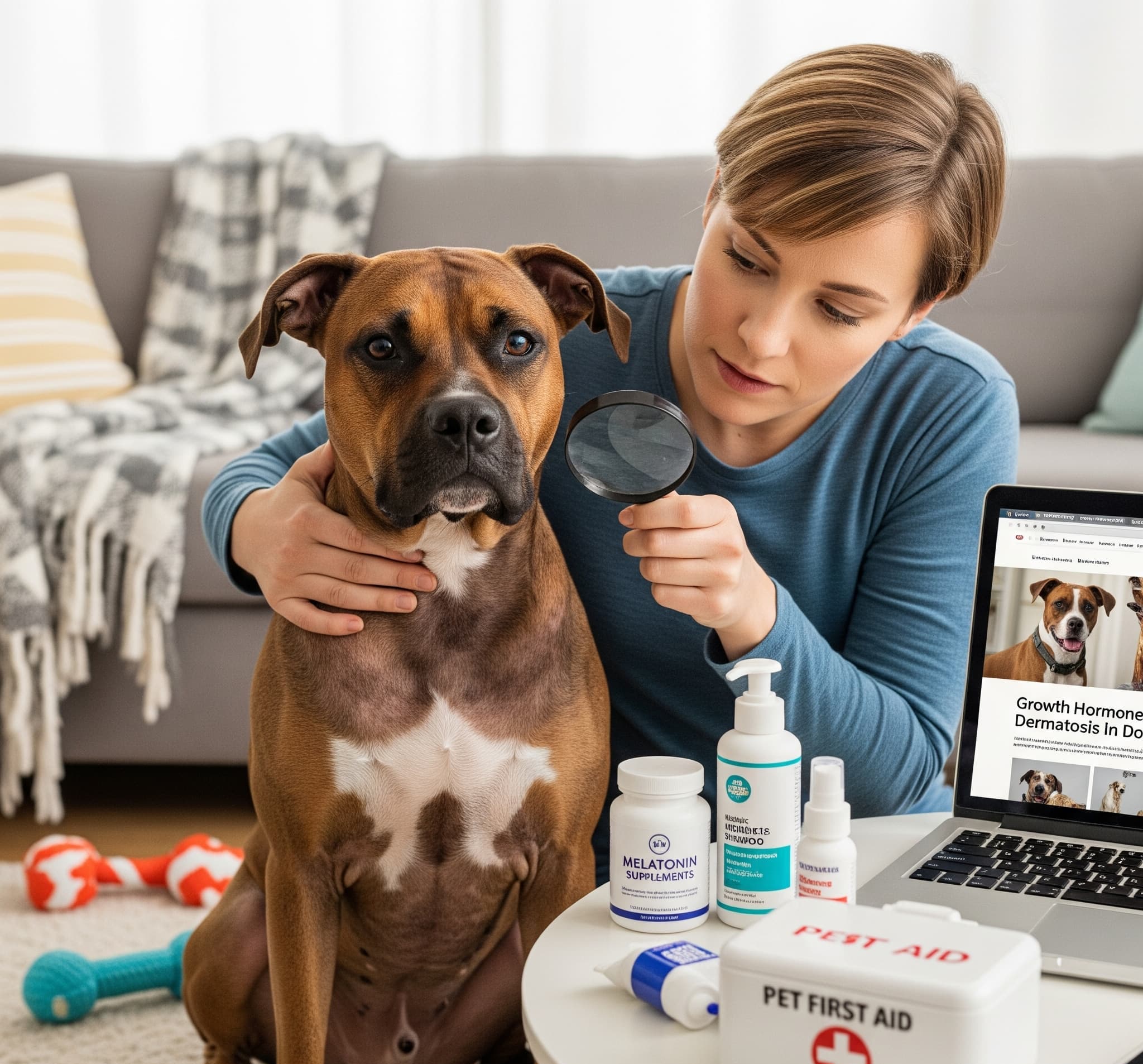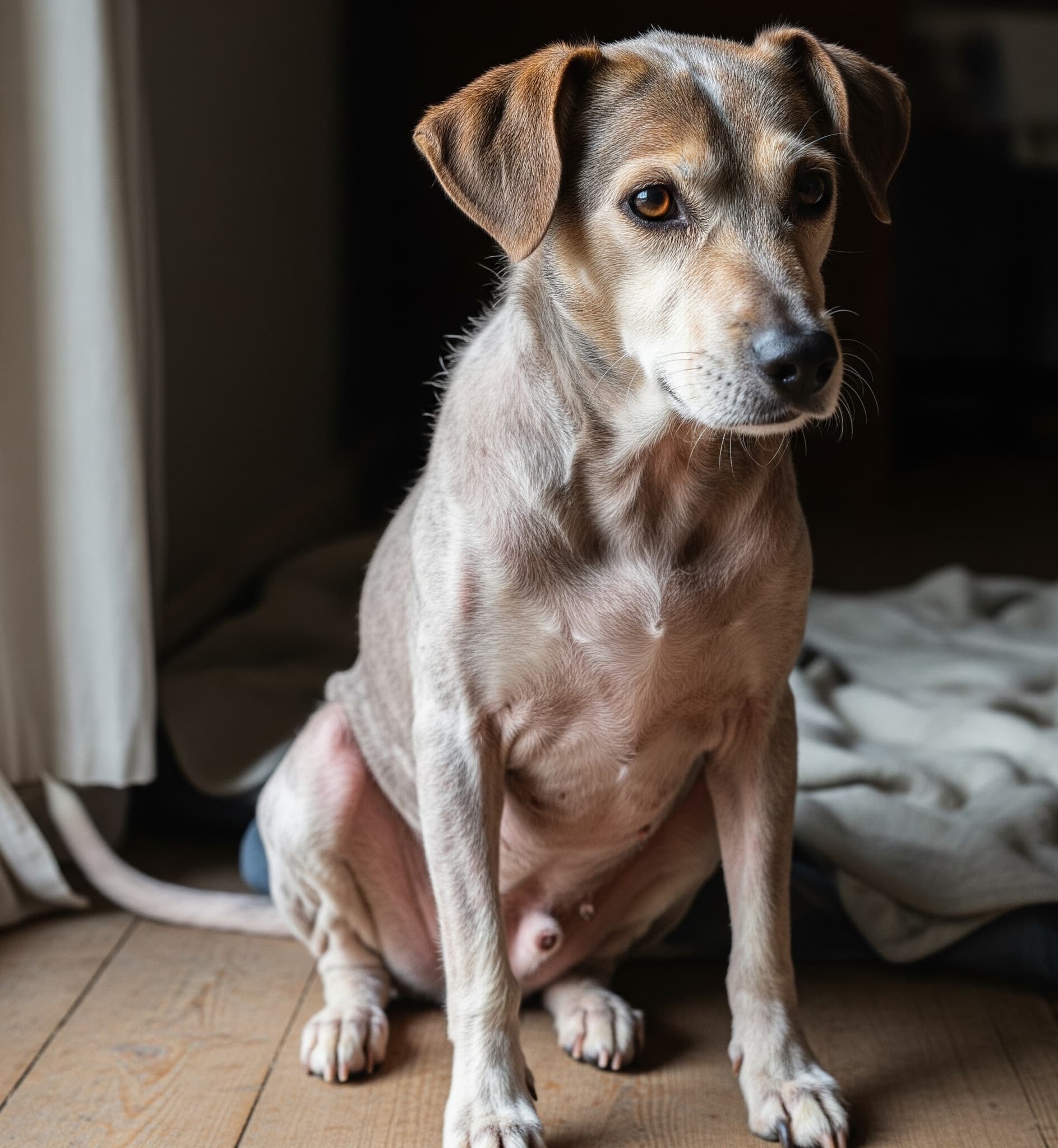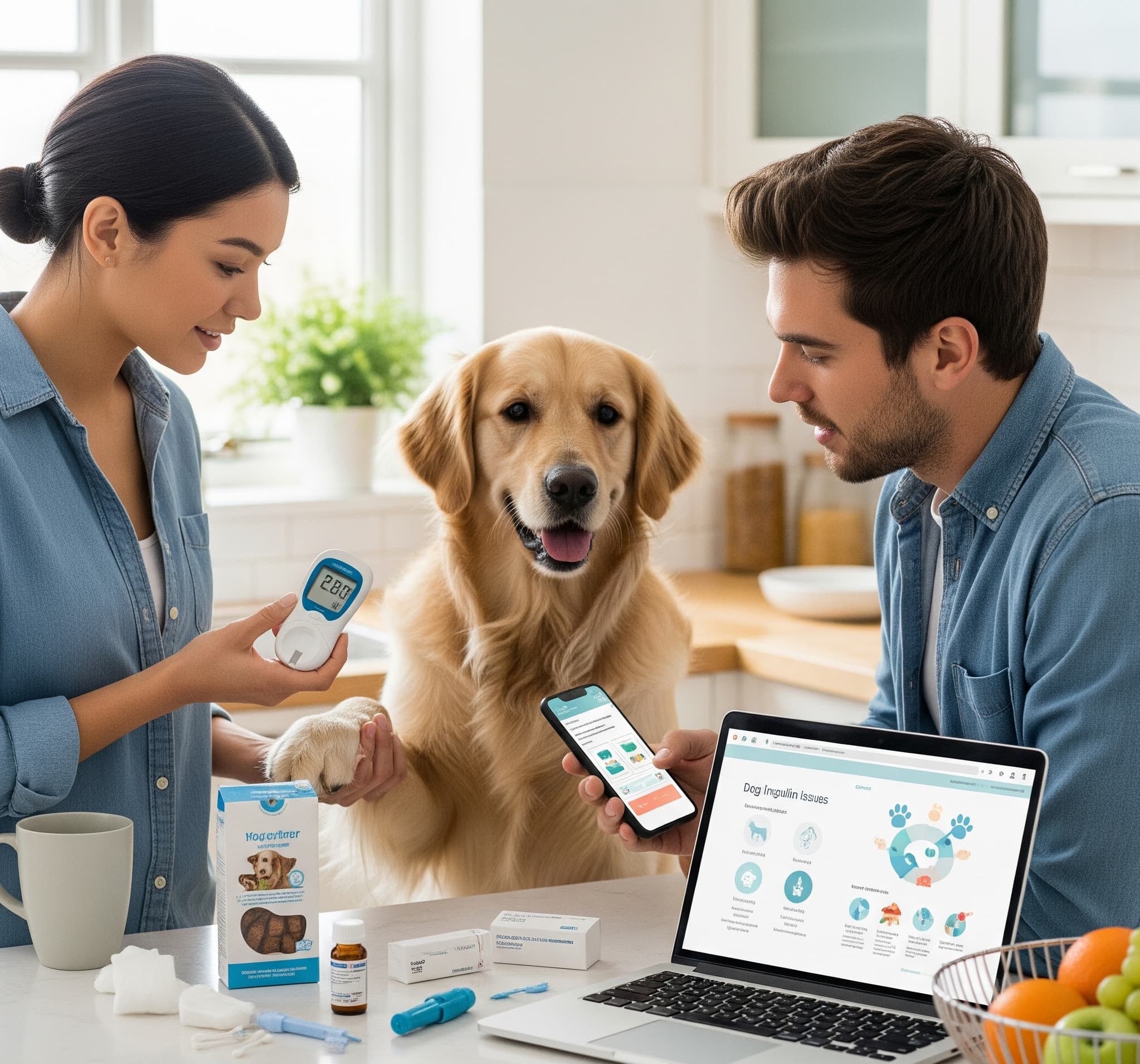For Dog Owners: Spotting and Treating Growth Hormone-Responsive Dermatosis at Home
Skim through this article to be able to identify and manage growth hormone-responsive dermatosis in dogs with some easy at home tricks. Maintain your furry friend’s skin in prime condition!
Introduction:
First of all, have you spotted your canine best friend scratching themselves as if they are preparing for a pet Olympics? Perhaps it’s only a case of allergies, or maybe they had a rough time in a dog park, but in some cases, the underlying issue is something more insidious such as growth hormone-responsive dermatosis. Don’t fret, I know it’s a mouthful! If left untreated, this skin condition which is linked to hormonal dysregulation in dogs can turn your beloved pup’s life into a nightmare. The good news is, you can detect it early and even treat it within the cozy confines of your domicile. Without any delay, I want to discuss this condition, its implications for your dog, and steps on how to keep your furry friend’s skin healthy and their coat gleaming. Are you excited? Here’s what I plan to discuss:
- What Is Growth Hormone-Responsive Dermatosis in Dogs?
- How to Spot the Signs at Home
- Home Treatment Options That Actually Work
- When to Reach Out to The Vet (and What to Anticipate)
- Your Most Pressing Questions Addressed
What Is Growth Hormone-Responsive Dermatosis in Dogs?
Let’s start breaking this down.
While “growth hormone-responsive dermatosis” may sound like something out of a sci-fi movie, it is simply a skin condition associated with low levels of growth hormone in dogs. Think of growth hormone like the conductor of an internal orchestra for your dog, balancing skin condition and fur growth. When it’s out of tune, skin can become dry and flaky while fur may patch and fall out. It’s almost like their coat is throwing a tantrum!
Any dogs can be affected by this, although it frequently is seen in Pomeranians, Chow Chows and Poodles. It is mildly uncommon and not widely known, so it is important to be vigilant. It may be caused by a deficit of growth hormone, often from pituitary gland problems, or can mimic other hormonal disorders like hypothyroidism. The best part is that a dog can be cared for with the proper strategies, and there is no need to turn the home into a veterinarian’s office.
How to Spot the Signs at Home
Have you ever thought about the possibility of your dog’s scratching being a warning sign? The earlier you can identify the signs of growth hormone-responsive dermatosis the better. Here’s some tips to consider while playing the sleuth at your home:
First things first, look out for any form of balding as long as it’s symmetrical. If your dog’s sides or rear are sporting what resembles a poorly executed haircut, pay attention. The skin itself can also be dry as well as scaly, or darker than what is normal and appear as though it is over-tanned. Your puppy is likely to be scratching more than normal and licking certain areas with obsessive attention. Rather than allergies, where the skin is usually angry and inflamed, with this condition the skin and fur are dull and lifeless.
To help you play vet at home, the checklist provided below will assist you:
- Symmetrical hair loss (think matching bald spots on both sides)
- Dry, flaky, or thickened skin
- No intense redness or oozing (that’s more likely allergies or infections)
- A dull coat that’s lost its usual sparkle
If this sounds like your dog, then there’s no need to panic. It’s like discovering an unusual ingredient while preparing your favorite dish: you just need to adjust certain things until it’s perfect. Note when and how symptoms worsen and be on the lookout for patterns. Pro tip: Taking photos to document changes over time is really helpful and is like creating a scrapbook, but for your dog’s skin wellness.
Home Treatment Options That Actually Work
Using a moisturizing hypoallergenic shampoo when bathing your dog does help. Products that include oatmeal or aloe vera can help soothe inflamed skin. Bathe your dog once a week. Be careful not to overdo it; excessive bathing can strip natural oils and worsen skin conditions. Rinsing thoroughly and drying by patting is better done gentle than scrubbed as if handling a light pastry.
Dietary Skin Health Boosters
What you feed your dog is always a source of energy. Skin healing starts with proper nutrition, and it is easier to get if you incorporate omega-3 fatty acids. Picture omega-3 as a secret boost to a dog’s coat. Recommendation of a fish oil supplement of proper dosage or changing to a dog food with skin health focus should be done by your vet. Always be sure to check with your vet before implementing drastic changes to nutrition, no one wants a hungry dog!
Humidifiers in Dry Living Spaces
Excessively drying a dog’s skin—or a hot desert in the case of a house—is not ideal to have. In this case a humidifier can give help by adding moisture to the air and preventing dry skin. Picture it as a simple yet effective solution to dry skin. Be sure to have the humidifier on in the rooms your dog spends the most time in.
Daily Brushing
Daily brushing of your dog is a form of care that improves spa time working with the skin as a natural spa for a dog’s skin is a natural way of healing skin, while brushing improves blood circulation of natural skin oils. Picking a soft brush offers a gentle touch, so consider it a mini massage. Every pup appreciates a spa time.
When to Reach Out to The Vet (and What to Anticipate)
Let’s be honest, in certain situations, the all-in-one solution approach to dog care that most dog owners use won’t work. If your dog seems to be symptomatic for over a couple of weeks, or is unusually losing fur, presenting shedding symptoms akin to a spring shedding husky, then a vet is a must.
Your vet check is on the nose as you will most likely be having a checkup and your dog history is all washed and ready for show. If you happen to bring the dog photo scrapbook, you will be so lucky as you’ll be the happiest scrapbooking dog mom. Expect your vet to run some blood tests on your dog’s granules, some might even want to skin biopsy but in a kind way do not fret for your pup, this is a quick procedure.
In these cases, treatment could involve hormone supplements or other medications which seek to restore balance in the system. Like giving your dog’s internal orchestra a new conductor. Expect to spend on follow up visits, and the initial test which could set you back anywhere between $100 – $300. Your vet will help you with the at-home care instructions, so you have a plan to follow.
FAQs: Your Most Pressing Questions Addressed Here
Still looking for answers? I totally get it. Let me address a few specific things dog owners want to know concerning growth hormone-responsive dermatosis.
Is There A Chance This Condition Is Completely Curable?
The answer to this relies on the dog. For some, significant improvement is achieved and for some, the condition is persistent and requires a lot of attention and care. Just like managing a pet who is a finicky eater, once you find a solution, you stick with it.
From What Point In Time Should I Expect Results From The Treatments Done At Home?
Based on the vet’s instructions, stick to the regimen for 2 – 4 weeks. If the skin irritation persists well beyond this timeframe, seeking a vet’s advice would be a good idea. A good amount of resilience and care is a balancing act to getting this right.
Are Some Breeds More Susceptible To This?
Sure, Pomeranians, Poodles, and Chow Chows tend to have a greater chance of developing it, but every dog can be affected. It’s similar to how some of us are more susceptible to sunburn—it’s all in the genes.
Closing Remarks
Solving the puzzle of growth hormone-responsive dermatosis may feel daunting, but you are now equipped with knowledge to identify and treat it with homecare. With soothing baths and a change in diet, you can promote your dog’s comfort. For more complicated cases, help is just a phone call away. Dogs deserve to proudly flaunt their coat and it can be done easily. Have your own questions or tips? Leave a comment or subscribe to the newsletter for more pet care tips. Edited Add: If you found this post helpful, please, share it with other dog enthusiasts.




Post Comment